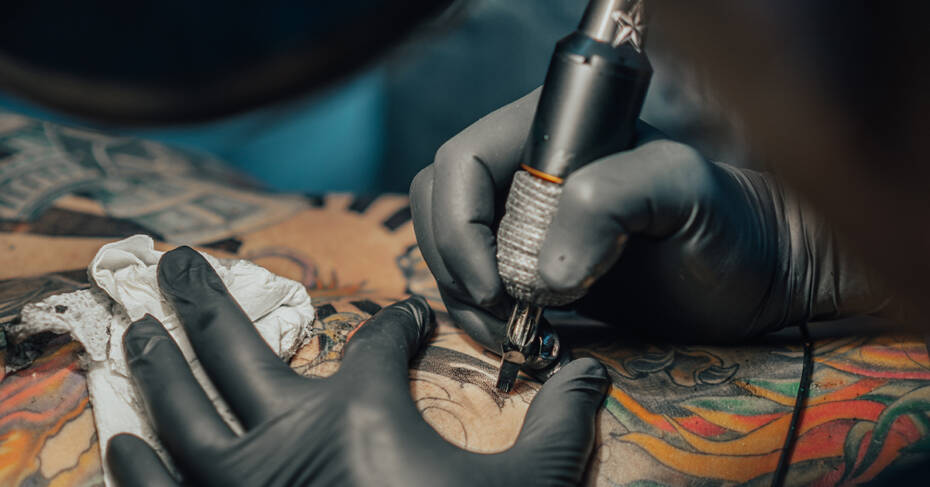The tattoo industry has seen more bad tattoo studios/artists than ever before. With tattoos becoming increasingly popular, there are plenty of bad tattoo studios/artists popping up hoping to make a quick buck off of anyone looking to get a tattoo.
Getting a tattoo is a big decision – you are putting your health and your skin on the line and the last thing you want is to end up with a bad tattoo or worse, an infection from a dirty studio. Luckily, we have you covered.
This article will take a look at the 12 major warning signs of a bad tattoo studio/artist and help you avoid your local “scratcher”.
- Getting a tattoo in a reputable studio will greatly reduce your risk of getting a bad tattoo or an infection.
- Do not choose your tattoo artist by price – cheap tattoos aren’t good and good tattoos aren’t cheap!
- Always trust your gut – if you feel uncomfortable at ANY point during the session, you are allowed to leave.
1. Quality of work
One of the quickest and easiest ways to help determine whether a tattoo artist is good or bad is to look at the work they have done. Most artists will have an updated portfolio on Instagram or Facebook for you to have a look at, or on their tattoo studio’s website or social media accounts. If the artist you are researching doesn’t have an up-to-date portfolio on the internet, we would consider this to be a red flag.
Good tattoo:
Once you have selected an artist and have their portfolio in front of you, it’s time to take a closer look at their work. Here’s a short list of what to look out for when examining an artist’s work:
Line Quality
Zoom in a little (or a lot!) and examine your artist’s line work. A good artist will have smooth and consistent lines. Mistakes do happen and you may see a little wobble in your artists’ work here and there, but overall they should be clean and well-saturated.
If you are seeing scratchy lines that almost look grey, that are not consistent, and are very wobbly, you are probably looking at a bad tattoo artist’s portfolio. Linework with blowouts is another thing to look out for. Good tattoo artists rarely have blowouts in their tattoos which are a clear sign of the artist going too deep.
Color Saturation
One of the hardest techniques to accomplish as a tattoo artist is evenly saturated areas of color without overworking the skin.
A good artist will be able to pack color smoothly into the skin without causing too much trauma to the skin. Have a close look at the artist’s work – if the areas of color in the tattoo appear patchy or are overworked you may be looking at a bad tattoo artist’s work.
Overworked skin will usually look chewed up like burger meat (for lack of a better description!) and is accompanied by excessive redness and bleeding around the tattoo.
Bad color saturation:
Good color saturation:
Blending and Shading Gradients
One of the most common styles that bad tattoo artists will start with is realism. It is fairly easy to spot a bad realistic tattoo by the quality of the shading. A good tattoo artist will softly blend areas of shading from dark to light. A bad tattoo artist will usually struggle with blending tones in a tattoo. You may notice areas that are too dark and do not transition well into lighter areas, so the tattoo ends up looking patchy and slightly off.
2. Hygiene
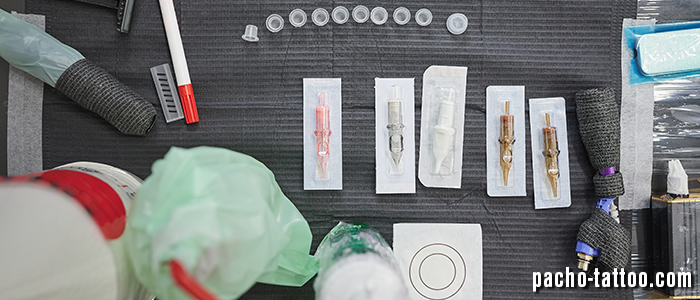

General Shop Hygiene
Most good tattoo artists will operate out of a well-established shop that is registered and licensed, but some bad ones do slip through the cracks and may become registered and licensed. Luckily, there are some general things to look out for when spotting a bad tattoo studio.
These include carpeted flooring, untidy shelving, desks, and workspaces, no dedicated separate tattoo stations, dirty floors, untidy reception areas, and no medical waste disposal. Some good tattoo artists do work in a private studio in their homes, but if you are inexperienced in looking for a good tattoo artist it is best to avoid home studios.
Barrier Protection
Have a look at your artist’s workstation. A good tattoo artist will practice good barrier protection and will cover all of their equipment. A tattoo artist’s station should be completely covered with cling wrap and a dental bib.
Their machine should be fully wrapped with no exposed pieces including all cables. The wash bottle should be covered and the tattoo bed should have a linen saver on it. If you notice anything that the artist is touching is not covered, RUN. This is a sign of potential cross-contamination and you could be at risk of catching a blood-borne disease.
New needles
Reusing needles is a big no-no in the tattoo industry. A good artist will always use brand-new needles that have been sterilized and sealed.
If you hear your tattoo artist is reusing needles by boiling them in a kettle to sterilize them or scrubbing them in the back room, then you better get away as fast as you can! Needles cannot be sterilized and should never be reused.
3. Tattooist vs Tattoo artist
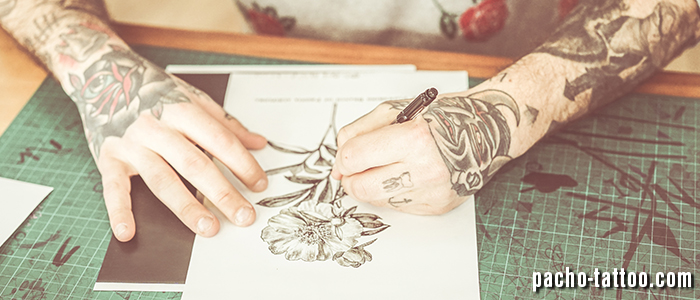

I often put tattoo artists into two categories: a tattooist, and a tattoo artist. A tattooist is someone who is technically good at tattooing but isn’t generally good at art.
This doesn’t make them bad at tattooing, it just means they are good at replicating tattoos they’ve found online or from images they have photoshopped together. A tattoo artist is somebody who is technically good at tattooing and is an exceptional artist who loves to create.
A tattoo artist may have the upper hand in avoiding mistakes when compared to a tattooist as they can continue tattooing if their stencil rubs off, they understand the flow of the body better and can design your tattoo to match that flow, and you will almost always receive a custom, unique tattoo.
Do they draw?
A good way to distinguish between a tattooist and a tattoo artist is to see if they draw and create art other than tattooing. A tattoo artist will create custom flash pieces, paintings, sketches, and other crafts in their spare time since they enjoy creating art. A tattooist will rarely make art outside of tattooing.
Have you seen that design before?
Look out for copied designs. A good tattoo artist will usually take a client’s idea and use it as inspiration to create a beautiful and unique design for their client.
A good tattoo artist is passionate about their work and wants to put a piece of themselves into every design they create. This is not to say that good tattoo artists never copy – clients can be stubborn about what they want sometimes, but most of a good tattoo artist’s work should be unique.
4. Experience
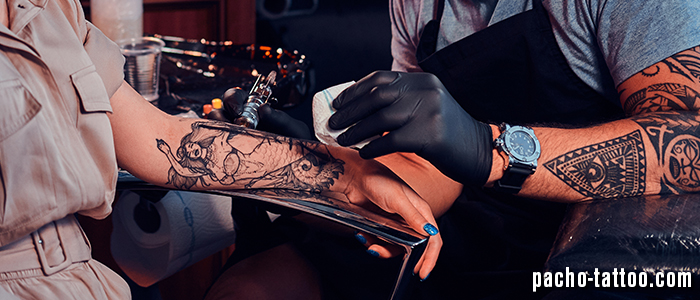

Becoming a good artist takes time. Try to find out how long your tattoo artist has been tattooing and if they did a legitimate apprenticeship. A tattoo artist that has been practicing for many years generally tends to be better than artists that have just entered the industry so it may be safer to get tattooed by someone with more experience.
This is not to say that a tattoo artist with 10 years of experience is automatically deemed a good artist. I have personally seen one or two artists that have been in the industry for over 10 years who I think should probably put their machines down. Using this list, you can easily determine if an experienced artist is good or bad.
5. Price
If the price is too good to be true, it usually is.
Quality work comes at a price. Tattoos are permanent so it is not the best time to bargain hunt. You do not want to get a tattoo just because it is cheap – this may end up being a very expensive mistake as cover-ups or laser removal are both very expensive procedures.
A good artist usually charges a minimum rate of $100 – $200 and an hourly rate of $100 – $250 per hour.
6. Healed work
If your friend or family member recommends their artist to you, take a look at the work they have done. A couple of signs of a bad tattoo artist’s healed works are the following:
- The ink that has fallen out – if lines are exceptionally faded or areas of solid color are patchy this is usually a sign that the artist did not put the ink into the skin deep enough.
- If the tattoo was overworked it is usually accompanied by excessive scarring or patches of ink that have fallen out.
- Blowouts are also a sign of a bad tattoo artist – this occurs when the tattoo artist deposits inks too far into the skin where it then spreads under the skin and can become quite unsightly.
- If your tattoo artist posts pictures of their healed work, this is generally a sign that your tattoo artist is a good one.
7. Licensed
Depending on your area, you may be able to research if your artist is licensed by Health and Safety. Alternatively, there should be a Health and Safety Certificate displayed in your tattoo artist’s shop. If you do not see one displayed, you can ask to see one.
If the studio is hesitant to show you, it is best to not risk getting tattooed there.
8. Sobriety
A tattoo artist should be completely sober while tattooing! Tattooing is hard enough already, and being under the influence can make it significantly harder.
If you are concerned your artist is not completely sober it may be a good idea to reschedule or cancel your appointment. It is a clear risk and violation to you and your safety.
9. Professionalism and customer care
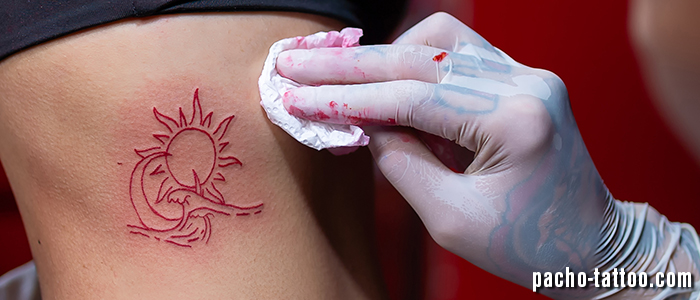

If your artist is unnecessarily rude and arrogant it may be a good idea to reconsider your choice of artist.
Customer care is an extremely important part of tattooing – as an artist, you are changing someone’s life by permanently marking their body and potentially doing an important tattoo such as a memorial tattoo or a scar cover-up.
If at any point you feel like your artist is being condescending, rushing the process, or not listening to you, you may want to avoid getting tattooed by them.
10. Aftercare
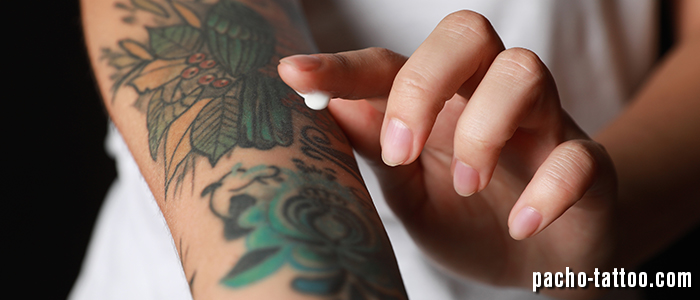

A good artist will always make sure you know how to take care of your tattoo correctly. They want to ensure your tattoo heals as well as it can and will want to protect you from making any aftercare mistakes. If you want to familiarize yourself with good tattoo aftercare, take a look at our Aftercare Article.
11. Google and reviews
Some quick research can go a long way when trying to find a good tattoo artist. Look your artist up online – a simple Google search will do.
Google Maps reviews and Facebook reviews are good places to do some digging on your artist. See what others have to say about them and their shop and steer clear if there are a lot of bad reviews.
12. Trust your gut
If your tattoo artist is giving you a bad feeling it’s probably for a good reason. Never feel pressured by your artist to go through with the tattoo appointment.
If you’re feeling uncertain it’s probably better to take a step back and consider your choices. Tattoos are permanent and you do not want something on your body you will regret. Your gut is a powerful thing!
FAQ
How common are tattoo mistakes?
Good tattoo artists rarely make mistakes, but bad tattoo artists make mistakes daily. That is why it is important to choose a good tattoo artist.
What is the regret rate of tattoos?
Over 78% of people regret at least one of their tattoos! Choosing a good tattoo artist will reduce the risk of you regretting your tattoo.
What are the most regretted tattoos?
Research reveals that most people regret their spur-of-the-moment tattoos, tattoos that are done badly, and tattoos on parts of their body that change over time (such as the lower back, stomach, and ribs. In my personal experience, most of my clients regret tattoos that were done badly and I often fix up old tattoos for them.
Is new tattoo regret common?
It is normal to feel new tattoo regret. You are most likely in shock seeing a change to your body and it may take some time for you to get used to your new tattoo. I experienced a new tattoo regret for the first time a few weeks ago and it goes away after a few days.
Is tattoo popularity decreasing?
If anything, tattoo popularity is increasing! More than 40% of US citizens between the ages of 18 and 29 have at least one tattoo.
12 Signs You’re About To Get A Bad Tattoo From a Bad Tattoo Studio
Having a bad tattoo can knock your confidence and can be extremely expensive to fix. It is very important to choose your tattoo artist carefully and with consideration to avoid getting a bad tattoo or even worse, a serious infection or blood-borne disease.
There are a variety of ways to know if a tattoo artist is bad, including poor hygiene, inexperience, and a cheap price. This list covers most of the important warning signs and will hopefully help you choose your next tattoo artist wisely.
